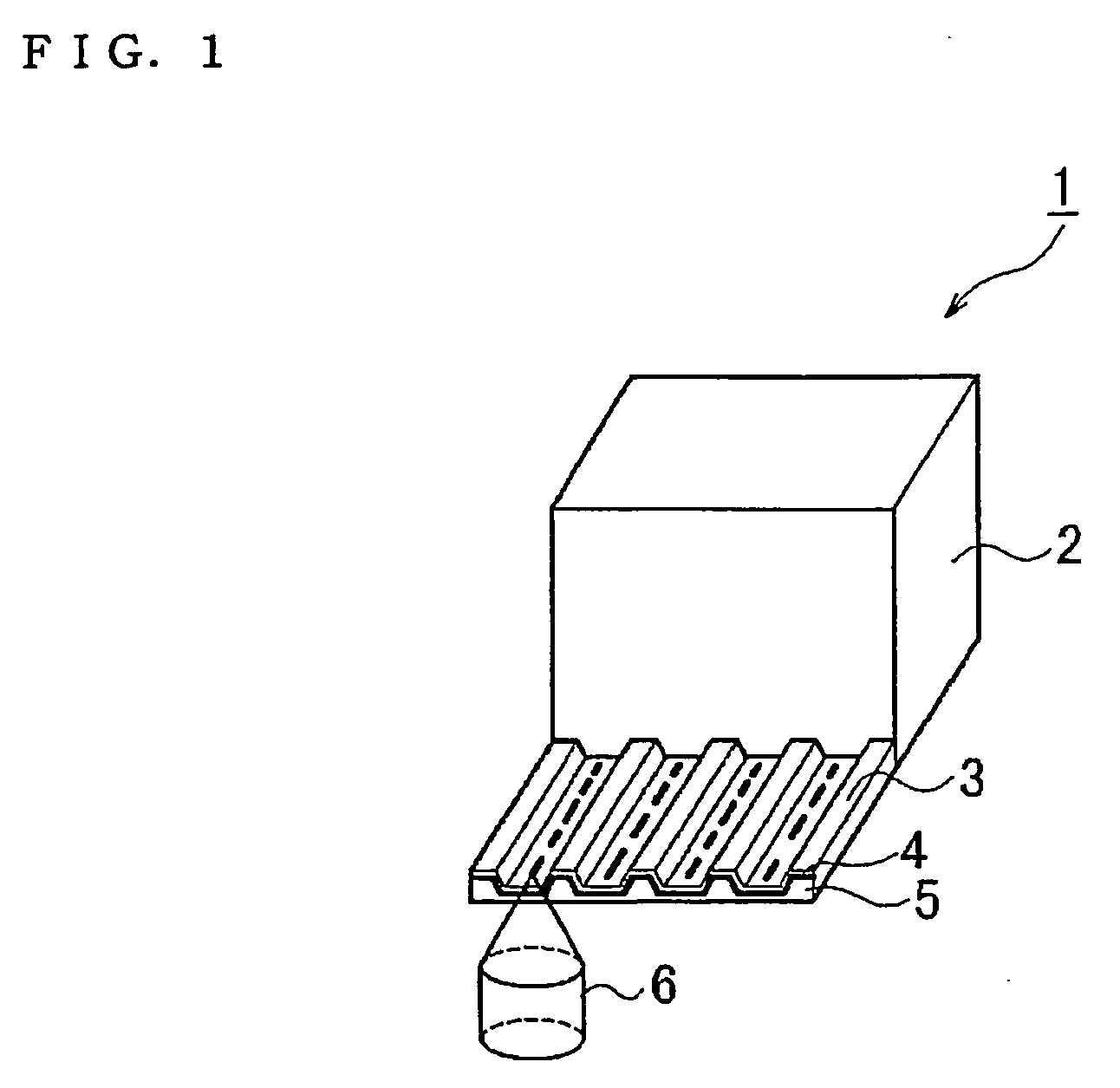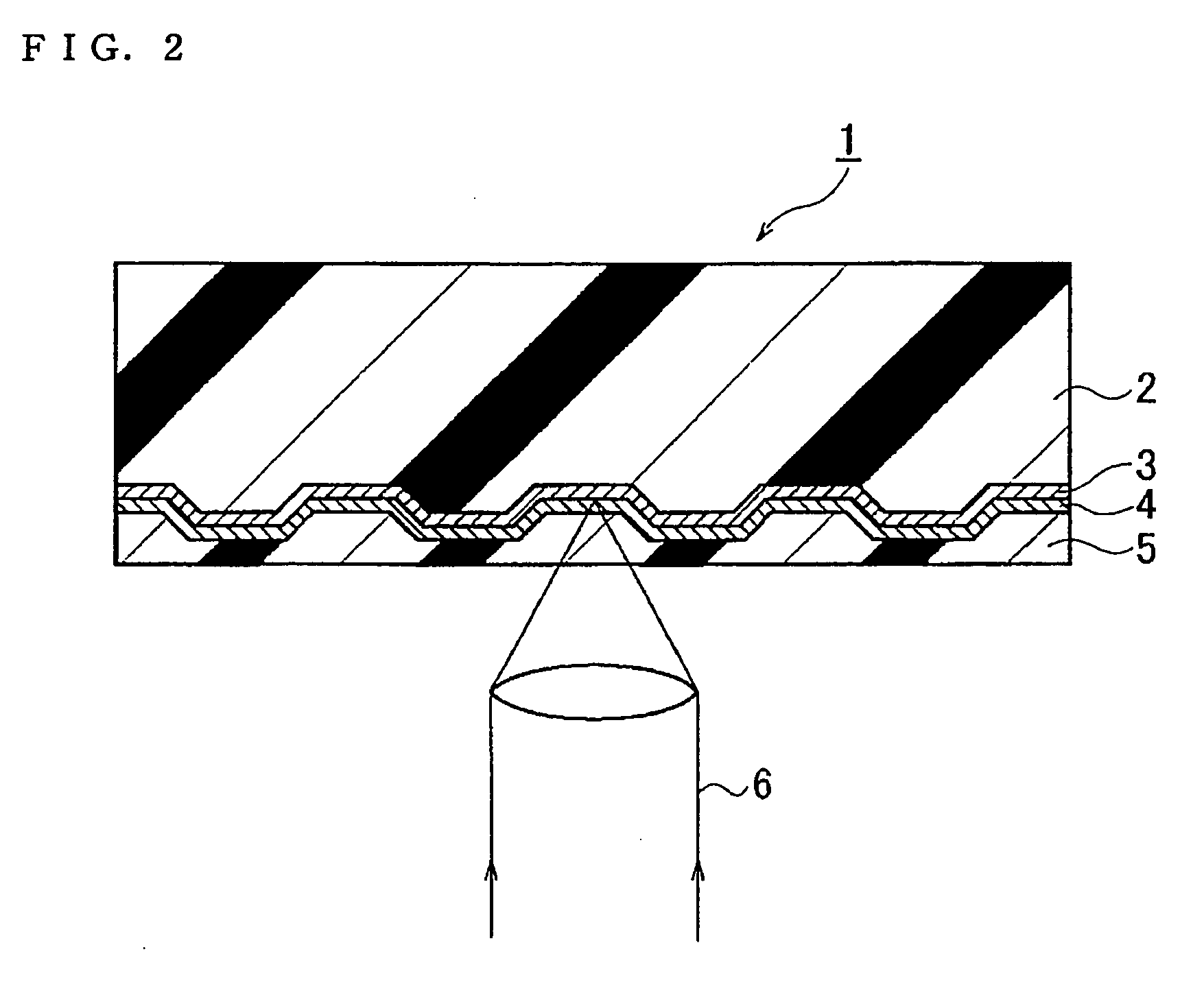Film for optical component, winding laminate of film, optical component, and optical disc
a technology of winding laminate and optical component, which is applied in the direction of mechanical recording, record information storage, instruments, etc., can solve the problems of easy damage to the surface of the optical disk, difficult to accurately read the signal information on the recording layer, and the disk itself warps, etc., to achieve good heat resistance, positive birefringence, and negative birefringence
- Summary
- Abstract
- Description
- Claims
- Application Information
AI Technical Summary
Benefits of technology
Problems solved by technology
Method used
Image
Examples
example 1
[0182] A vinyl-base polymer (an acrylic resin) was produced at first in this example, a film was formed from the vinyl-base polymer, and an optical disk was then produced using the film.
[0183] Charged in a 500 mL autoclave was 200 g of acetone as a polimerization solvent, and 66.5 g (58.4 mol %) of methyl methacrylate (MMA), 39.9 g (27.4 mol %) of butyl acrylate (BA), and 26.6 g (14.2 mol %) of cyclohexyl maleimide were weighed. After dissolving 0.4 g of lauroyl peroxide by adding to the monomer mixture as polimerization initiator, it was added to a flask. Dissolved oxygen was replaced by flowing nitrogen gas for 1 hour at room temperature (25° C.), and the temperature of the solution was raised to 60° C. in nitrogen stream. The temperature was kept for 18 hours to obtain an acetone solution of the vinyl-base polymer. The polymerization ratio was 99% or more.
[0184] Antioxidants known as abbreviated names AO-50 and HP-10 and a light stabilizer known as an abbreviated name LA-57 wer...
example 2
[0197] A film was prepared in this example by the same method as in Example 1, except that no antioxidant and light stabilizer was added, and an optical disk was manufactured using the film. Characteristics of the film and disk were evaluated by the same method as in Examples 1. The results are summarized in Table 2.
example 3
[0198] After independently producing two kinds of vinyl-base polymers as described below, a film was prepared using a resin mixture in which both vinyl-base polymers were mixed in a prescribed ratio. An optical disk was manufactured using the film. The disk was evaluated by the same method as in Example 1, except that the resin used for the film was changed. The results are summarized in Table 2.
[0199] Vinyl-base polymer A was produced by the following procedure. Charged in a 500 mL autoclave was 200 g of acetone as a polymerization solvent, and 38 g (33 mol %) of methyl methacrylate (MMA), 90 g (61 mol %) of butyl acrylate (BA), and 5 g (6 mol %) of acrylic acid (AA) were weighed. After dissolving 0.4 g of lauroyl peroxide as a polymerization initiator by adding to the monomer mixture, the mixture was added into a flask. After replacing dissolved oxygen by flowing nitrogen gas for 1 hour at room temperature, the temperature of the reaction mixture was raised to 60° C. in a nitroge...
PUM
 Login to View More
Login to View More Abstract
Description
Claims
Application Information
 Login to View More
Login to View More - R&D
- Intellectual Property
- Life Sciences
- Materials
- Tech Scout
- Unparalleled Data Quality
- Higher Quality Content
- 60% Fewer Hallucinations
Browse by: Latest US Patents, China's latest patents, Technical Efficacy Thesaurus, Application Domain, Technology Topic, Popular Technical Reports.
© 2025 PatSnap. All rights reserved.Legal|Privacy policy|Modern Slavery Act Transparency Statement|Sitemap|About US| Contact US: help@patsnap.com



